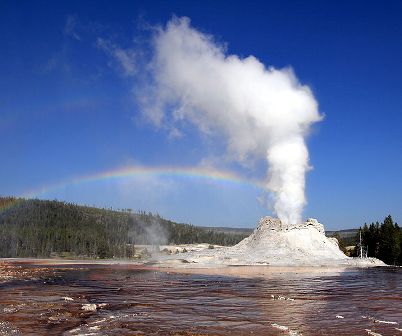- Series:Fossils, Transcript English
Genesis 7:11b
“… the same day were all the fountains of the great deep broken up, and the windows of heaven were opened.”
How long does it take for large mineral formations to form? While evolutionists say millions of years, creationists assume that most of the rock formations we see formed relatively quickly as the waters of the Genesis flood receded.
 In 1903, someone pounded an iron pipe into the ground in what is today Hot Springs State Park. The mineral-rich water beneath the ground immediately began flowing out of the pipe. As the warm mineral water evaporated, the minerals that were left behind deposited as travertine. Within just a few years, there was a mound of travertine as high as the pipe and tapering to the ground. Today, the water has stopped flowing. What remains today is a mound of minerals sheeted in pastel curtains over 20 feet high and more than 15 feet across.
In 1903, someone pounded an iron pipe into the ground in what is today Hot Springs State Park. The mineral-rich water beneath the ground immediately began flowing out of the pipe. As the warm mineral water evaporated, the minerals that were left behind deposited as travertine. Within just a few years, there was a mound of travertine as high as the pipe and tapering to the ground. Today, the water has stopped flowing. What remains today is a mound of minerals sheeted in pastel curtains over 20 feet high and more than 15 feet across.
The Bible’s description of the fountains of the deep being broken up at the beginning of the Genesis flood suggests huge hot water geysers. Much of that water would undoubtedly have been like the mineral-rich waters of today’s hot springs. This mineral water then mixed with the sediment created by the violence of the flood. As the sediment finally settled out and the waters dried up, the remaining minerals would help quickly bind the sediment together into the sedimentary rock layers we commonly see today. Those long evolutionary ages would be unnecessary.
Prayer:
Father, I thank You that in Christ, you do not judge me as You judged those in Noah’s day. Amen.
Notes:
Creation, 9-11/05, p. 56, Tas Walker, “A Monstrous Mound of … Minerals!” Photo: Castle geyser at Yellowstone National Park. Courtesy of Brocken Inaglory. Licensed under the Creative Commons Attribution-Share Alike 3.0 Unported, 2.5 Generic license.
